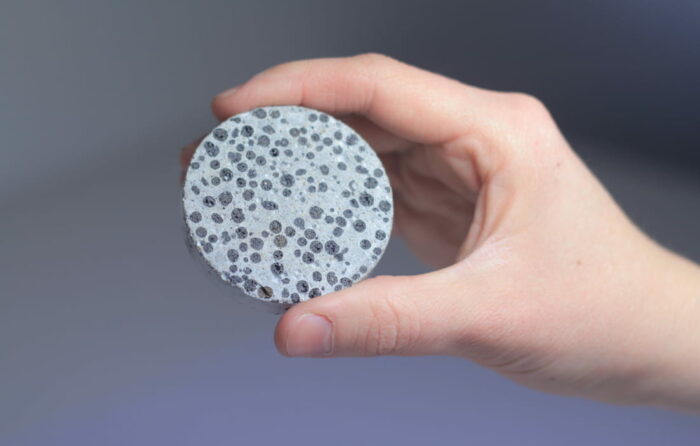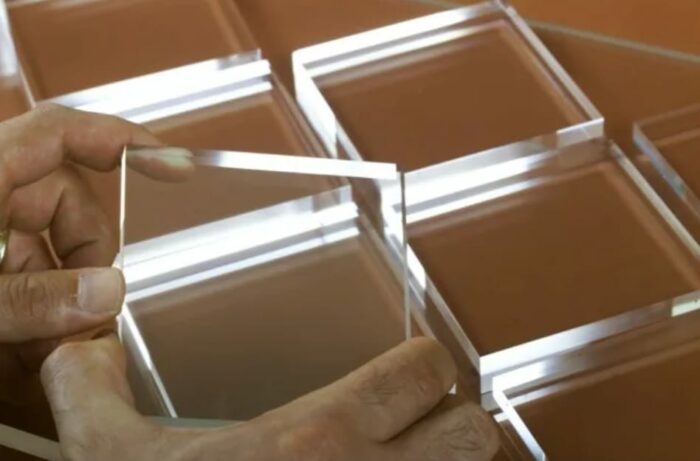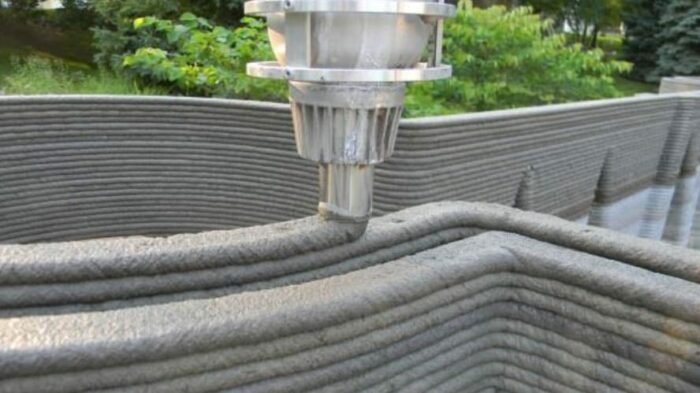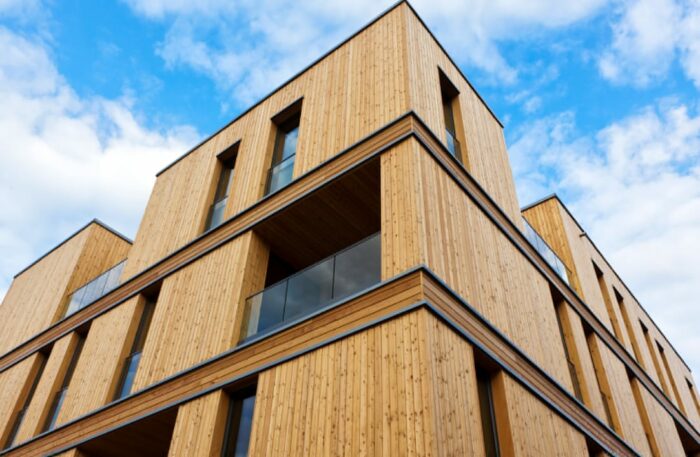Corporate construction isn’t just about towering skyscrapers and sprawling business complexes; it also encompasses the less visible but equally vital sectors like housing for workers in industries such as oil and gas.
In Texas, the heartbeat of America’s energy sector, oilfield housing has become a significant part of the local infrastructure. The demand for robust, comfortable, and quickly deployable housing solutions in the Lone Star State has given rise to a unique market for modular and prefabricated homes.
In the midst of this, innovative building materials are revolutionizing how corporate structures are constructed and conceptualized.
1. Self-Healing Concrete

Imagine a world where the very foundations of a building can repair themselves, and self-healing concrete is making this a reality.
Infused with bacteria that produce limestone upon contact with water, this concrete addresses the age-old problem of cracking, extending the structural integrity and longevity of buildings. With this technology, modular housing units could last much longer, with less need for maintenance.
2. Carbon Fiber
Carbon fiber is becoming essential in construction, especially for corporate buildings where strength and durability are paramount. It’s incredibly strong yet lightweight, which allows for innovative building designs that include expansive spaces and bold architectural features.
Its strength-to-weight ratio is particularly beneficial in areas where buildings need to withstand harsh conditions. Carbon fiber ensures these structures are not only robust but also long-lasting.
Furthermore, carbon fiber is excellent for updating older buildings. It can reinforce structures without adding weight, making them safer and more durable.
If you’re looking for employee accommodations that are likewise sturdy and well-designed, you could look into Texas oilfield housing, such as that offered by Iron Guard Housing. They use durable materials, and their man camps are situated close to major industrial sites.
3. Transparent Aluminum

Transparent aluminum, a material once relegated to the realm of science fiction, has become an innovative game-changer in corporate construction. Officially known as aluminum oxynitride (ALON), this sturdy ceramic blend offers the transparency of glass with the strength of aluminum.
In the corporate world, ALON’s clear, durable qualities make it an ideal choice for high-rise building facades and security windows. Its resistance to weather and impact is particularly beneficial for constructions, where robust materials are essential.
The application of transparent aluminum goes beyond just aesthetics; it’s a strategic choice for safety and functionality, marrying visibility with resilience. As the use of ALON grows, it’s set to redefine architectural possibilities, enabling the creation of structures that are not only functional but visually striking.
4. Aerogels
Aerogels are among the lightest solid materials available and are exceptional insulators. Their use in corporate construction promises not only enhanced thermal efficiency but also structural integrity with minimal weight. This feature is particularly beneficial in tall building projects where reducing load is crucial.
Their manufacture involves replacing the liquid in a gel with gas, which results in a solid that’s over 90% air yet can support many times its own weight. Aerogels can be mixed into paints or added to building composites for walls and windows, blending seamlessly with design requirements.
They’re also sustainable, as their insulating properties mean lower energy costs and a smaller carbon footprint for buildings. As a building material, aerogels offer a combination of low density, high strength, and thermal insulation, making them a smart choice for future-focused construction projects.
5. 3D Printing Materials

The adaptability of 3D printing is revolutionizing construction with the ability to create complex, tailor-made structures on demand.
This means reduced waste and unprecedented design flexibility — a boon for corporate constructions looking to push architectural boundaries. It also opens up new possibilities for Texas oilfield housing, allowing for the customization of living spaces to meet the specific needs of their inhabitants.
6. Smart Glass
Smart glass is changing the game in building materials by offering the ability to switch from transparent to opaque with an electrical current. This innovative technology has considerable benefits for corporate spaces.
With smart glass, natural light can be maximized, reducing the need for artificial lighting and creating a more comfortable workspace. It also offers the potential for significant energy savings, especially important in areas with extreme weather conditions. By controlling sunlight entry, it can lower cooling costs in hot climates and retain warmth during colder periods, cutting down on HVAC use.
In corporate settings, smart glass provides the added advantage of privacy at the flip of a switch, eliminating the need for curtains or blinds. Smart glass can also improve living conditions by aligning indoor light levels with natural cycles, promoting better sleep and overall well-being.
7. Modified Wood

Modified wood is reshaping sustainable construction. Its enhanced durability and resistance to weather conditions make it ideal for long-lasting corporate housing.
This eco-friendly option is created by altering wood at the molecular level, which improves its resilience and stability. It’s a sustainable choice that utilizes fast-growing woods and reduces reliance on endangered species.
With its natural appearance and design versatility, modified wood meets the practical and aesthetic requirements of modern corporate construction, offering an innovative solution that balances durability with environmental responsibility.
8. Bioplastics
Bioplastics are gaining traction in sustainable building, offering a renewable alternative to traditional materials. These plant-based products, useful in everything from insulation to design elements, have a lower carbon footprint due to their eco-friendly sources and energy-efficient production.
In corporate housing, bioplastics can reduce environmental impact. They can be used for various building components, promoting sustainability and reflecting a commitment to environmental stewardship.
Bioplastics are also beneficial in that they can be designed to biodegrade, addressing waste issues associated with construction. This is particularly advantageous for temporary setups, which may need to be dismantled or relocated.
The push towards bioplastics is sparking innovation and may lead to economic benefits through new market opportunities and potential cost reductions in the long run. As the industry focuses more on sustainability, bioplastics are set to become a key element in green corporate construction.
Final Words
With these cutting-edge materials, the construction industry is set to undergo a transformation that will touch every aspect of corporate construction, including the specialized field of oilfield housing.
The future of construction is bright, and it’s building smarter, stronger, and more sustainable. From the towering structures that define our urban landscapes to the essential corporate housing that supports our manual labor force, innovative materials are laying the groundwork for a new era of construction.
 Jessica Paster The Future is Green
Jessica Paster The Future is Green